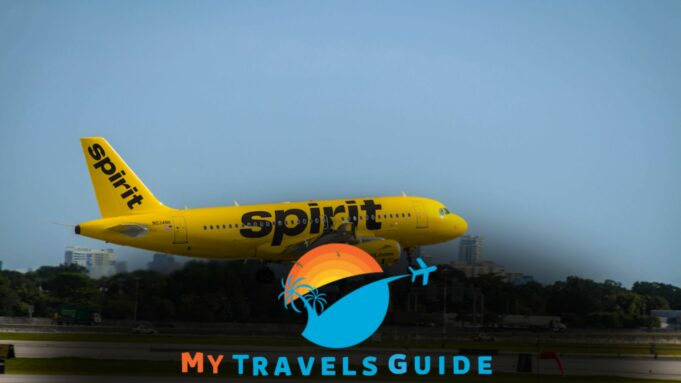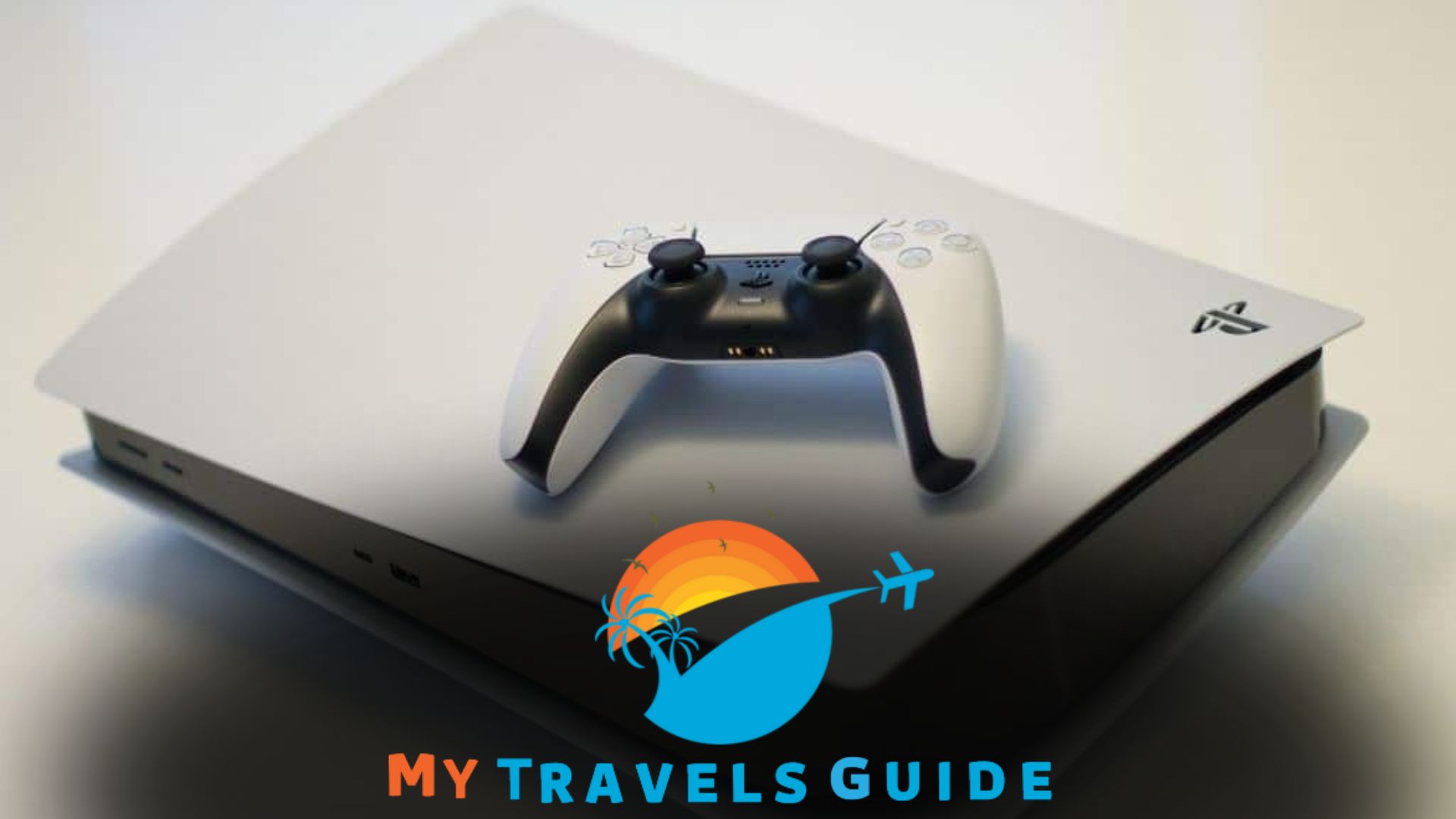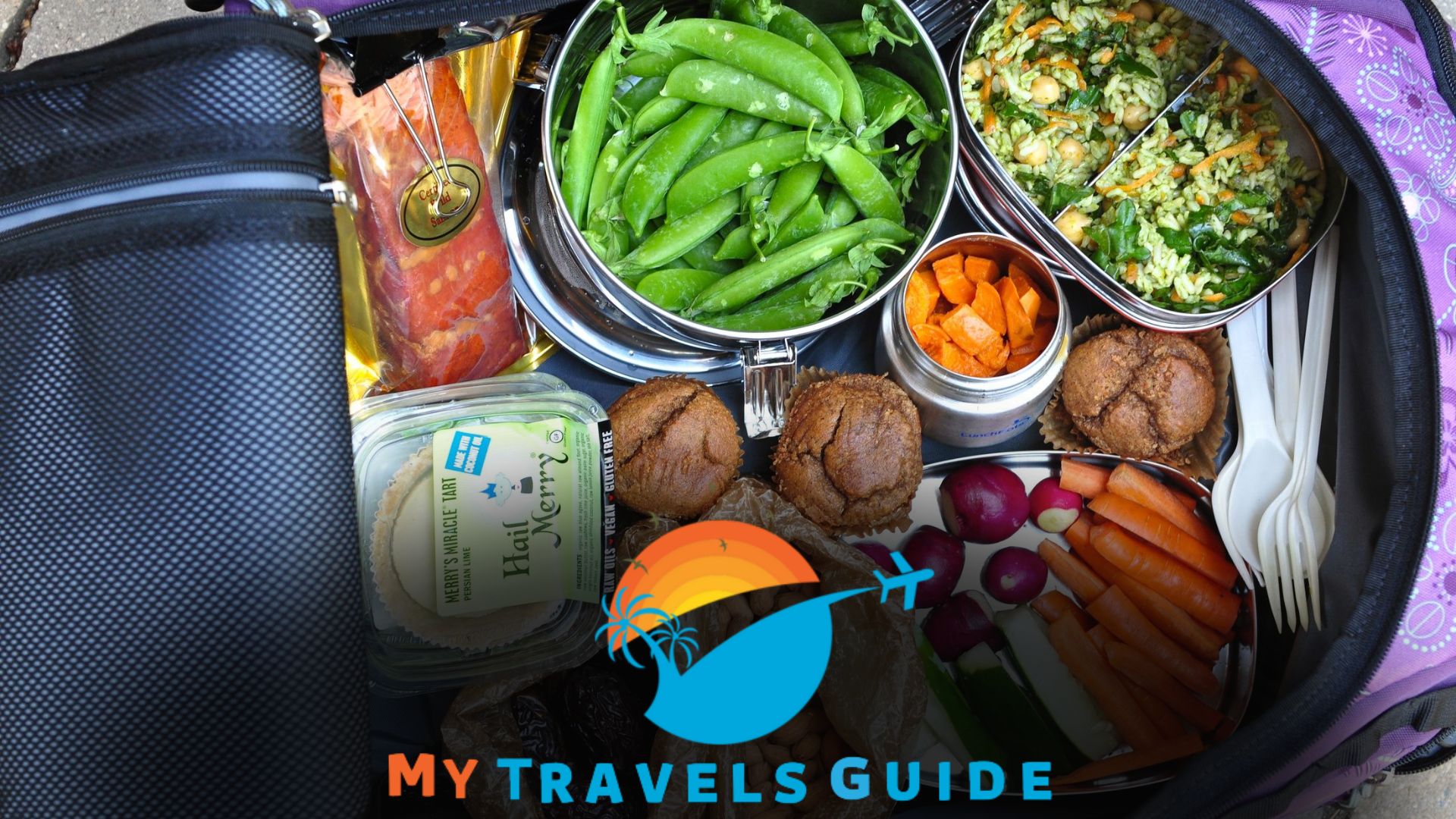In this article:
Spirit Airlines maintains low prices by operating as an ultra-low-cost carrier with a no-frills business model. They focus on basic transportation and charge extra for amenities.
Delving into the ever-competitive airline industry, Spirit Airlines offers some of the most affordable flight options.
This budget-friendly carrier operates on the principle of ‘bare fare’, which means passengers pay for the seat and can customize their travel experience with additional paid services as needed.
This à la carte approach to travel allows for lower ticket prices, with customers only paying for what they need.
Spirit Airlines can further reduce costs by streamlining their operations with a single aircraft type, high aircraft utilization, and cutting out complimentary services that many traditional airlines offer.
The savings are then passed on to customers, making air travel more accessible to budget-conscious flyers. Our focus on providing value and choice directly aligns with customers looking for economical ways to reach their destinations.
Introduction to Spirit Airlines
Welcome to our enlightening journey through the realms of affordable air travel.
Introduction to Spirit Airlines sets the stage for understanding why this airline manages to keep its costs low, offering travelers budget-friendly options.
Prepare to discover the intricacies of Spirit’s model that shake up the airline industry with its competitive pricing strategies.
Overview of Spirit Airlines
Famed for its bright yellow planes and equally vibrant deals, Spirit Airlines emerges as a champion of low-cost travel. Since its inception, Spirit has committed to making flying affordable for everyone.
The airline operates an extensive network, primarily focusing on routes throughout the Americas. Its simplified service approach strips away the frills and focuses on the essentials, thereby passing on significant savings to its customers.
Spirit’s bustling hubs connect various destinations, providing a no-nonsense travel experience.
Spirit’s Position in the Airline Industry
In the competitive skies, Spirit Airlines soars as a disruptor. It has carved out a niche as an ultra-low-cost carrier (ULCC), setting itself apart from legacy carriers and other budget-friendly airlines.
Spirit Airlines has consistently offered some of the most wallet-friendly fares in the market by relentlessly pursuing cost-cutting measures and optimizing its operational efficiency.
With customer-centricity at its core, Spirit focuses on choice, allowing passengers to tailor their travel experience with various add-on services.
Defining the Ultra Low-cost Carrier Model
The Ultra Low-Cost Carrier (ULCC) model is an innovative approach to airline management that Spirit Airlines exemplifies. This model is predicated on a formula that reduces complexity and costs, lowering airfares. Key characteristics include:
- Single Aircraft Type: Utilizing a homogeneous fleet reduces maintenance and training expenses.
- Non-essential Elimination: Extras are optional, encouraging passengers to pay only for what they use.
- Dynamic Pricing: Fares adjust based on demand, timing, and route popularity.
- Point-to-Point Routes: Direct flights avoid costly hub operations and turn around quickly at airports.
These strategic principles allow Spirit to undercut competitors while still maintaining significant profitability. The simplicity of the ULCC model is at the heart of Spirit’s ability to retain its status as one of the most cost-effective airlines flying today.
Cost-saving Strategies Implemented By Spirit
Spirit Airlines is a master of cost efficiency, directly translating into their tantalizingly low prices.
The budget carrier has deployed various strategies to keep operational costs at a minimum while still providing the essential services that keep travelers flying. Let’s delve into how Spirit manages to keep its fares so competitive.
Utilizing A Single Aircraft Type
One of Spirit’s most significant cost-cutting measures is using a single aircraft type across their entire fleet.
By operating only Airbus A320 family jets, Spirit benefits from a streamlined maintenance routine and reduced costs for training crew and pilots.
The commonality of parts and expertise leads to more efficient servicing and quicker turnaround times, keeping planes in the air and earning money.
High-density Seating Arrangement
Spirit maximizes profitability with a high-density seating configuration. Their aircraft are fitted with more seats, reducing the airline’s cost per passenger.
These additional seats translate into less legroom, which may affect comfort but enables Spirit to sell more tickets at lower prices, a trade-off many budget-conscious travelers are willing to make.
Unbundled Pricing Structure
At the heart of Spirit’s low fares is their unbundled pricing structure. This pricing model allows customers to pay only for what they use.
The ticket cost includes the bare minimum – a spot on the plane. Everything else, from carry-ons, checked luggage, seat selection, snacks, and drinks, incurs an additional charge.
This a la carte approach to air travel means that passengers can control their costs, directly influencing the overall price of their journey.
Secondary Airports and Route Optimization
Secondary airports often have lower fees than their major counterparts, and Spirit takes full advantage of this.
By operating out of these alternative airports, Spirit slashes its operational costs.
The airline cherry-picks routes, practicing route optimization to ensure high aircraft utilization and occupancy rates, contributing to lower fares.
Limited Complimentary Services
Complimentary services are sparse on Spirit flights. The absence of free in-flight entertainment, Wi-Fi, and snacks means reduced overhead for the airline.
By eliminating these complementary features or offering them for a fee, Spirit maintains its frugal operational model, allowing passengers to fly without forcing them to subsidize amenities they may not desire.
Spirit Airlines tailors its services to the needs of cost-sensitive flyers. Spirit can offer incredibly low fares by employing a lean and agile approach, making air travel accessible to a wider range of passengers.
Revenue Generation Tactics
Understanding how Spirit Airlines maintains affordability for its customers requires a peek behind the curtain at their ingenious revenue generation tactics.
While the base fares might seem remarkably low, Spirit cleverly designs its pricing strategy to stay profitable while offering competitive rates.
Let’s delve into the core tactics that keep Spirit Airlines at the forefront of budget-friendly skies.
Ancillary Fees and Optional Upgrades
Spirit Airlines has mastered the art of ancillary revenue. These are costs for additional services that passengers can opt into, allowing for a more customized travel experience.
Knowing that each traveler’s needs vary, Spirit provides a flexible model where costs are based on utilization.
- Baggage Fees: Charges for both carry-on and checked luggage.
- Seat Selection: Premium charges for choice seating.
- Onboard Refreshments: Paid snacks and drinks during the flight.
- Priority Boarding: Option to skip the line at a price.
Advertising and Co-branded Partnerships
The cabins of Spirit airplanes double as advertising spaces, with various brands finding their place on overhead bins, tray tables, and in-flight magazines.
These co-branded partnerships turn every flight into a revenue-generating opportunity, all while keeping ticket prices low for consumers.
Examples Include:
- Travel insurance partnerships
- Hotel and car rental service promotions
- Credit card company advertisements
Loyalty Programs and the Spirit Credit Card
Loyalty programs and the proprietary Spirit Credit Card encourage regular use by offering rewards, creating a cycle of repeat business.
With incentives such as miles for spending and exclusive deals, customers are enticed to stay within the Spirit ecosystem for their travel needs.
| Program Feature | Benefit |
|---|---|
| Free Spirit Miles | Earn and redeem miles on flights |
| Spirit Credit Card Rewards | Points accumulation for daily purchases |
Dynamic Pricing Model
Spirit’s dynamic pricing model aligns with real-time supply and demand, ensuring seat prices are always optimized for market conditions. By analyzing data and adjusting fares accordingly:
- The airline capitalizes on popular routes during peak times.
- Attracts budget-conscious travelers during off-peak windows.
- Promotes last-minute deals to fill empty seats.
This strategic pricing maximizes profit and provides multiple price points to cater to a diverse customer base.
Customer Experience and Satisfaction
When travelers choose Spirit Airlines, they are often enticed by the promise of low-cost travel. As a budget carrier, Spirit Airlines’ competitive pricing strategy is a game changer in the aviation industry, reshaping customer experiences and satisfaction.
The airline’s model revolves around the ‘bare fare’ principle – offering the essential components of air travel while providing options for extras.
This strategy has significant implications for passenger reactions, managing expectations, striving for improvements, and how the airline stacks up against competitors.
Passenger Reactions to Low-cost Services
Customers’ responses to Spirit Airlines’ low-cost services vary widely. Some passengers celebrate the affordability and value, while others may struggle with the a la carte pricing model.
- Cost savings on tickets
- Charges for bags, seats, and additional services
- Diverse reviews reflecting different preferences
Feedback generally reflects a divide between those who prioritize budget-friendly travel and those who may seek a more inclusive flying experience.
Managing Expectations and Transparency
Spirit Airlines focuses on clear communication to manage customer expectations effectively. The strategy is simple:
Transparency at every touchpoint.
This approach ensures passengers understand what they’re paying for and what they’re not.
- Detailed guidelines on fare inclusions.
- Information on optional extras.
- Tools to calculate full travel costs upfront.
With complete clarity, Spirit avoids surprising customers with hidden fees, thus enhancing satisfaction.
Improvements and Innovations
Spirit Airlines invests in improvements and innovations to elevate customer satisfaction. Recently, the airline has initiated measures to improve the travel experience, resonate with customer needs, and provide greater value for money.
- Modernizing the fleet with fuel-efficient planes.
- Enhancing the in-flight experience with new cabin interiors.
- Upgrading the booking system for easier use.
These steps demonstrate Spirit’s commitment to affordability and a comfortable and hassle-free journey.
Comparison With Competitor Airlines
| Airline | Base Fare | Baggage Fees | In-flight Amenities |
|---|---|---|---|
| Spirit Airlines | Lowest | Charged Separately | Optional Extras |
| Main Competitors | Higher | Included/Variable | Generally Included |
Against other airlines, Spirit’s model stands out for its low base fare and tailored travel approach. By unbundling services, customers only pay for what they use.
This stark contrast is pivotal in why Spirit can maintain its position as a budget-friendly airline.
The Economic Impact of Spirit Airlines
Spirit Airlines stands out in the aviation marketplace as a beacon of affordability. With its game-changing business model, Spirit has redefined the economics of air travel, making flying both cost-effective for the carrier and cost-saving for travelers.
By examining Spirit’s influence on the industry, we uncover how this ultra-low-cost carrier disrupts, democratizes, and drives the future of aviation.
Effect on the Air Travel Market
The entry of Spirit Airlines into the market has spurred significant changes in the air travel landscape. Their strategy focuses on minimal base fares with additional charges for extras.
This unbundling of services has opened up competition and forced legacy carriers to reevaluate their pricing structures to remain competitive.
- Increased Price Sensitivity: Customers have become more conscious of fare prices, opting for Spirit’s no-frills efficiency.
- Competitive Response: Other airlines have introduced basic economy fares, paralleling Spirit’s simplistic model.
- Industry Profit Margins: The challenge for airlines is balancing competitive pricing with maintaining profitability, a tightrope walk in the nuanced airline industry.
Accessibility of Air Travel
Spirit Airlines has significantly increased the accessibility of air travel. With its low-cost offerings, a wider demographic can now afford flights for both leisure and business purposes.
This democratization of travel has impacted individual consumers and has had widespread economic implications by stimulating tourism and local economies where Spirit operates.
- Tourism Growth: Destinations with Spirit services often boost visitor numbers.
- Broader Customer Base: People who previously could not afford air travel are now potential customers.
Challenges and Criticisms
Despite its success, Spirit has not been without its challenges and criticisms. Customer complaints about additional fees, customer service, and flight delays have sparked conversations about the balance between cost and quality.
Moreover, there’s scrutiny over employee satisfaction and labor relations within the company.
| Aspect | Challenge |
|---|---|
| Additional Fees | Customer frustration over the nickel-and-diming for extras. |
| Service Quality | Perception of lower service levels compared to non-budget airlines. |
| Operational Delays | Operational hiccups result in flight disruptions. |
Future Outlook for Ultra Low-cost Carriers
The trajectory for Spirit and other ultra-low-cost carriers (ULCCs) is one of cautious optimism. The demand for inexpensive travel options remains high, but market forces and regulatory challenges could shape the sector in new ways.
Wrestles with changing fuel prices, evolving consumer expectations and potential new market entrants contribute to a dynamically unpredictable future.
- Fuel Price Volatility: A known variable in airline economics impacting cost structures.
- Consumer Demand Shifts: Travelers’ growing expectations for affordable yet satisfactory experiences.
- Regulatory Environment: Potential regulations that could affect operational costs and pricing strategies.
Conclusion
Understanding Spirit Airlines’ affordable pricing involves recognizing their cost-cutting strategies. Their ‘no-frills’ approach and efficiency in operations keep fares low.
It’s the quintessential choice for budget-conscious travelers looking to fly without the hefty price tag. Remember, with Spirit, you pay for the journey, not the extras.









